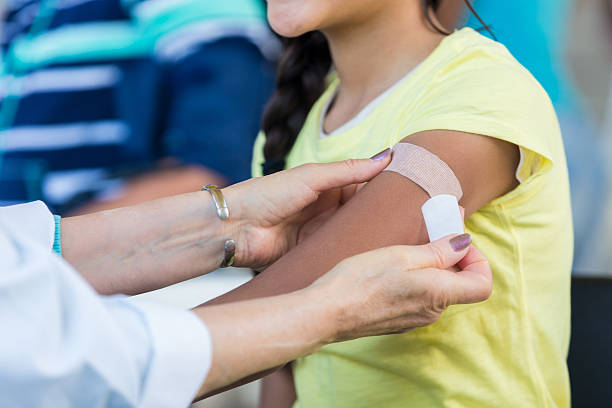Every year, 3-5 million people around the world get sick with flu, according to the World Health Organization and an estimated 290,000 – 650,000 people die from it. In the last flu pandemic which occurred from 1918 until 1919, the flu caused 50 – 100 million deaths.
Before the 1918-1919 pandemic, scientists believed the flu was caused by a bacteria called Haemophilus influenzae. It wasn’t until the 1930s that they confirmed it was actually a virus. In 1933, three scientists were able to isolate Influenza A virus in ferrets and in 1936, it was discovered it is possible to grow the virus in embryonated chicken eggs. By 1938, Jonas Salk and Thomas Francis developed the first flu vaccine using an inactivated strain of the Influenza A virus.
The vaccine was administered to soldiers fighting in WW2. By 1945, flu vaccine was licensed for civilian use and in 1946 they started to administer it to civilians. Vaccines during those times weren’t as purified as the ones we have today, and the impurities caused side effects such as fever, fatigue, and body aches leading many to incorrectly assume they caught the flu from the vaccine.
In 1976, there was a swine flu outbreak in New Jersey among Army recruits at Fort Dix. President Gerald Ford announced that all Americans will be vaccinated and Congress approved $137 million to produce the vaccines. It led to the inoculation of about a quarter of the US population in less than a year.
But after receiving the vaccine, hundreds of people developed Guillain-Barré syndrome which causes nerve damage and people panicked. In response, the Ford family televised getting their flu shots to hopefully alleviate the public’s fears, but it failed and the swine flu vaccination program was cancelled.
Production of seasonal flu vaccines went on. Seasonal strains of the influenza viruses mutate very quickly. In 1973, WHO developed a more effective process for targeting the virus strains that affect people, and 5 years later, the first trivalent vaccine was developed, which protects us from two strains of Influenza A and one strain of Influenza B.
In 2003, FluMist (administered through nasal spray) was approved by the FDA, and it was the first live attenuated influenza vaccine available.
In 2008, the CDC gave a recommendation that children 5 to 18 years old should receive a flu shot every year.
And by 2020-21 an estimated 200 million flu vaccines were distributed in the United States alone urging everyone to get vaccinated to avoid the double threat of the flu and Covid-19.
How Effective are Flu Vaccines?
Today’s flu vaccines contain 3 strains of the virus. The trivalent vaccine combines 2 influenza A virus strains and 1 influenza B strain to signal your immune system to develop antibodies for all 3. Your body will take about 2 weeks to build immunity after getting your shot.
But it’s not exactly a straightforward solution. You see, there are 4 flu virus species — A, B, C, and D — although the most common strains come from the A and B viruses. Typically two A strains are the most widespread during flu season: H1N1 and H3N2. But there’s never a surefire way to know what strains will affect us in the next season. So it’s pretty much a guessing game.
In any case, getting a flu vaccine is still much better than not getting one. You could develop serious complications when you get the flu. Be sure to get yourself vaccinated and schedule a Kroger Flu Shot as soon as possible.
